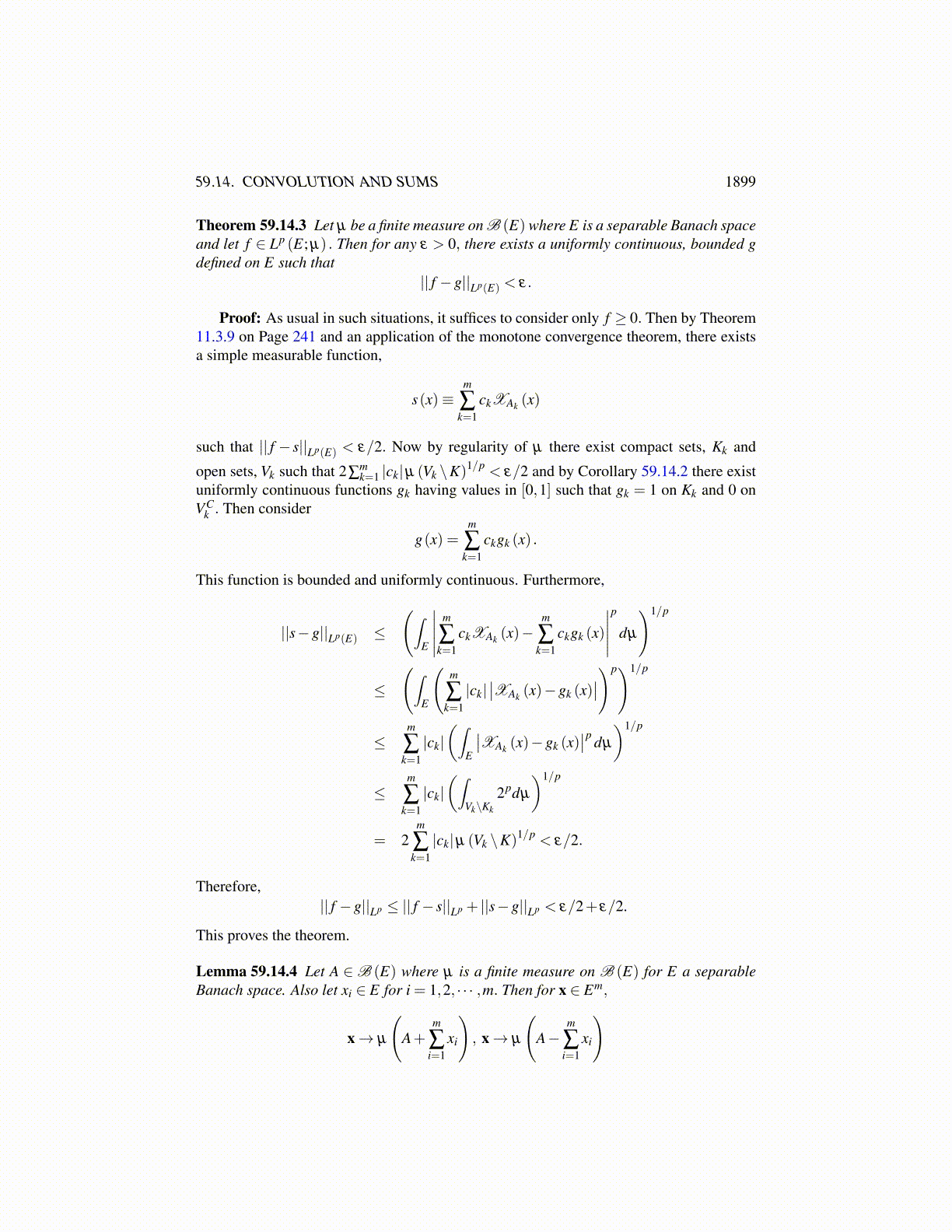
59.13. CHARACTERISTIC FUNCTIONS IN BANACH SPACE 1899
It suffices to consider only the case where each Ek = E. This is because you can con-sider each X j to have values in ∏
nk=1 Ek by letting X j take its values in the jth component
of the product and 0 in the other components. Can you draw the conclusion the randomvariables are independent? By Theorem 59.5.1, it suffices to show the random variables{
gmk ◦Xk}n
k=1 are independent where gmk =(x∗1, · · · ,x∗mk
)∈ (E ′)mk . This happens if when-
ever tmk ∈ Rmk and
P =n
∑k=1
tmk ·(gmk ◦Xk
),
it follows
E(eiP)= n
∏k=1
E(
eitmk ·(gmk◦Xk)). (59.13.21)
However, the expression on the right in 59.13.21 equals
n
∏k=1
E(
ei(tmk ·gmk)◦Xk)
and tmk · gmk ≡ ∑mkj=1 t jx∗j ∈ E ′. Also the expression on the left equals E
(ei∑
nk=1 tmk ·gmk◦Xk
)Therefore, by assumption, 59.13.21 holds.
There is an obvious corollary which is useful.
Corollary 59.13.4 Let {Xk}nk=1be random variables such that Xk has values in Ek, a real
separable Banach space. Then the random variables are independent if and only if
E(eiP)= n
∏j=1
E(
eit∗j (X j))
where P≡ ∑nj=1 t∗j (X j) for t∗j ∈M j where M j is a dense subset of E ′j.
Proof: The easy direction follows from Theorem 59.13.3. Suppose then the aboveequation holds for all t∗j ∈M j. Then let t∗j ∈ E ′ and let
{t∗n j
}be a sequence in M j such that
limn→∞
t∗n j = t∗j in E ′
Then define
P≡n
∑j=1
t∗j X j, Pn ≡n
∑j=1
t∗n jX j.
It follows
E(eiP) = lim
n→∞E(eiPn)
= limn→∞
n
∏j=1
E(
eit∗n j(X j))
=n
∏j=1
E(
eit∗j (X j))